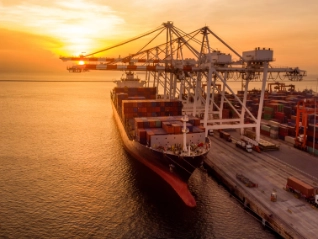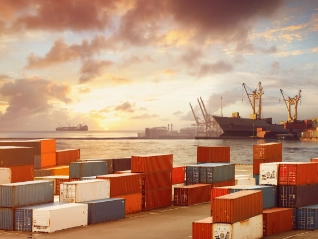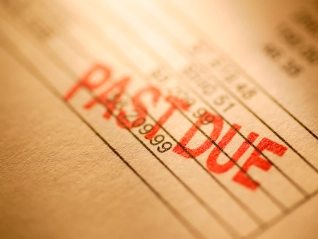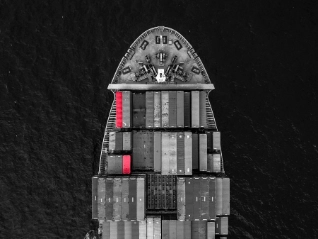
Ultime notizie e approfondimenti

Rapporti e pubblicazioni dei nostri esperti di settore

Guide utili a portata di mano

Esempi di buone pratiche di gestione del credito in vari settori e mercati

Storie di successo dei nostri clienti
Il presidente ha promesso il ritorno di milioni di posti di lavoro nelle fabbriche, ma l'aumento degli impegni di investimento nasconde un quadro contrastante per il settore manifatturiero statunitense.


100 anni di gestione del rischio, acquisizione di conoscenze e creazione di fiducia

Sebbene l'accordo porti un po' di sollievo, i dettagli irrisolti e gli obiettivi ambiziosi lasciano le aziende di fronte a un'incertezza continua e a potenziali tensioni commerciali future.

Legami più stretti potrebbero stimolare il commercio e creare un'alternativa funzionante all'inefficace OMC. Ma senza il coinvolgimento della Cina e degli Stati Uniti, un partenariato tra l'UE e il CPTPP può davvero avere un impatto significativo?

Atradius Syndicate 1864 will focus on trade credit risks, initially targeting new and existing European clients in the financial industry sector.

Le aziende devono affrontare rischi crescenti nella catena di approvvigionamento, poiché le tensioni geopolitiche, i dazi doganali e gli incentivi economici stanno creando una nuova geografia del commercio, ma anche le organizzazioni lungimiranti possono trarne vantaggio.

Amid economic and geopolitical volatility, ICISA highlights 2024 as a year that underscores the importance and resilience of trade credit and surety insurances.
Visualizzazione 7 fuori da 51
Alla ricerca di approdi sicuri in una regione divisa


Le tariffe e la relativa incertezza causano un forte impatto negativo

In alcuni mercati l'impatto indiretto dei dazi potrebbe frenare l'aumento della spesa alimentare.

La crescente resilienza messa alla prova dai cambiamenti politici degli Stati Uniti

Una temporanea distensione nella disputa tariffaria tra Stati Uniti e Cina sosterrà la crescita globale del settore elettronico.

Il nostro sondaggio condotto su aziende di tutto il Giappone rivela che, al di là dell'apparente stabilità del credito B2B,

Lo shock causato dalla politica commerciale degli Stati Uniti è senza precedenti e sta pesando sulle prospettive economiche globali.
Visualizzazione 7 fuori da 68
Many businesses underestimate the true impact of buyer credit risk assessment. This oversight can quietly erode profitability


La pianificazione della resilienza può fare la differenza tra la crescita aziendale e un fallimento catastrofico.

La cambiale ha plasmato il commercio globale per secoli. Sebbene funzioni bene per garantire la sicurezza delle transazioni, comporta anche il rischio di mancato pagamento.

Quando si parla di assicurazione del credito commerciale, spesso la si associa a una maggiore sicurezza. Tuttavia, è anche un potente strumento per promuovere la crescita aziendale e migliorare l'accesso ai finanziamenti.

Nell'attuale clima commerciale, i dazi doganali rappresentano una sfida importante. Questo articolo illustra come gli Incoterms aiutano le aziende a chiarire le responsabilità in materia di costi, semplificare la logistica e ridurre i rischi nelle transazioni internazionali.

A high Days Sales Outstanding (DSO) can strain cash flow, heighten risk, and hinder growth. Proactively managing DSO through credit policies, prompt invoicing, and effective collections is vital for financial resilience

Il CIO di Atradius ritiene che la trasformazione digitale sia fondamentale per sbloccare nuove opportunità nel settore dell'assicurazione del credito.
Visualizzazione 7 fuori da 22
Every customer is a potential risk. The larger and more solvent they are, the greater the risk. In January 2023, Brazil witnessed a financial scandal that shook the market


Atradius Surety has enabled Vinci Construction France to expand their sources of finance beyond their banking partners. This partnership with Atradius benefits Vinci Construction by providing substantial flexibility, excellent responsiveness and a capacity for innovation.


With the backing of Atradius’s resources, EnCom Polymers has been able to expand business with existing customers and go after new business they previously would have shied away from.

BVV GmbH grew internationally and recognised risks such as companies on the brink of insolvency in plenty of time to mitigate the risks.

How we are part of Continental Banden Groep B.V.'s business process, minimising risk and supporting sales

Visualizzazione 7 fuori da 11
Omron has achieved sustainable growth while navigating the uncertainties of China-US trade relations and regional manufacturing transformation.


FERM (International) offers competitive payment terms and limits their credit risk to developing countries by using Atradius Dutch State Business (DSB) and the DGGF.

El Ganso credits our support in helping the fashion brand grow from a domestic-focused Spanish startup to a successful international business.

By providing open dialogue, insight and valuable credit information we helped Brook Green Supply improve their internal credit risk management systems.

Late payers prompted content marketing agency KMOdynamoo to take out an Atradius credit insurance policy and has resulted in better debtor management.

Our agility and local knowledge of worldwide markets and buyers are key reasons why textiles business Georg Jensen Damask say they collaborate with us.

Janson Bridging (International) uses export credit insurance from Atradius Dutch State Business (DSB) to offer favourable credit terms to customers located in emerging markets.
Visualizzazione 7 fuori da 10
































